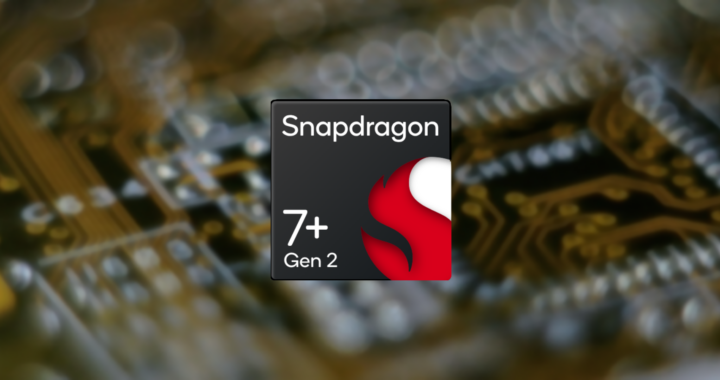The introduction of the Snapdragon 7+ Gen 2 on 17 March 2023 was part of the ongoing efforts of Qualcomm to improve its mid-range lineup of mobile system-on-chips and appeal to developers of mid-range smartphone and tablet devices. This chip brings in several notable improvements from the previous Snapdragon 7 Gen 1 and builds on existing wireless connectivity technologies and on-device artificial intelligence processing. This article explores and reviews the pros and cons of the Snapdragon 7+ Gen 2 by highlighting its key features and performance.
Features of Snapdragon 7+ Gen 2: New Specifications
Qualcomm designed the Snapdragon 7+ Gen 2 with better fabrication technology in mind. It was produced using the 4nm process node of Taiwan Semiconductor Manufacturing Company. This is similar to its predecessor and is also an improvement from the older generations of the Snapdragon 7 series like the 782G which is based on the 6nm process node.
Powering this chip is an 8-core Kryo CPU based on the big.LITTLE architecture of ARM. There is a single Arm Cortex X2 prime core clocked at 2.91 GHz on top of three additional Cortex A710 performance cores at 2.49 GHz. The four additional efficiency cores are based on the older but more power-efficient Cortex A510 and each is clocked at 1.8 GHz.
This chip is built for HRD mobile gaming on a mid-range device with its Adreno 725 GPU. This integrated GPU supports OpenGL ES 3.2, OpenCL 2.0, and Vulkan 1.1 graphics and compute API. There is also support for both HDR10 and HDR10+ and Dolby Vision. It is compatible with screens with 4K resolution at 60Hz and QHD resolution at 120Hz.
Qualcomm has factored in on-device AI acceleration in this chip. It has the Qualcomm Engine that combines the capabilities of the Kryo CPU, Adreno GPU, and the Qualcomm Hexagon to enable native handling of AI inference on a smartphone or tablet. The Sensing Hub is another dedicated AI accelerator for processing various contextually aware use cases.
Other features of the Snapdragon 7+ Gen 2 include both sub-6 GHz and mmWave 5G technologies in standalone and non-standalone modes. Wi-Fi is based on the 6E and 6 standards while Bluetooth 5.3 supports Snapdragon Sound Technology for low latency and lossless audio. The chip also supports high-definition cameras and computational photography.
Performance of Snapdragon 7+ Gen 2: Pros and Cons
1. General Processing Performance
One of the advantages of the Snapdragon 7+ Gen 2 is that it provides higher-level performance on a mid-range chip. Benchmark tests from AnTuTu 10 showed that its CPU scored 339608. This is 36 percent higher than the 235195 score of its predecessor and 12 percent higher than the 299418 score of Dimensity 8300 and even the 301184 of the Snapdragon 8 Gen 1.
Results from GeekBench 6 showed 1697 and 4404 scores for single-core and multi-core. It is about 2 percent better in single-core and about 9.5 percent better in multi-core processing than the Snapdragon 8 Gen 1 flagship. These are substantial performance results considering that the 8 Gen 1 was a flagship-level chip that powered several 2022 flagship Android devices.
This chip is also better than the newer-generation Snapdragon 7s Gen 3 in terms of overall CPU score and specific single-core and multi-core scores. However, when compared with the 7+ Gen 3, the newer mid-range chip from Qualcomm is 8.22 percent better based on AnTuTu 10 and is 13 and 16 percent better in single-core and multi-core based on GeekBench 6.
2. Graphics Processing Capabilities
The Adreno GPU has always been one of the strengths of Snapdragon chips. The specific 7+ Gen 2 chip scored 339560 in AnTuTu 10. This is around 68 percent higher than the 7 Gen 1 but about 22.5 percent lower than the older Snapdragon 8 Gen 1 flagship. It is worth noting that it is still about 27.9 percent better than its successor or the Snapdragon 7 Gen 3.
It also scored 7530 at 45 frames per second and 84 percent stability based on an assessment of its graphic performance in Vulkan via 3DMark Wild Life Performance. This is 24 percent better than the 5916 score of the Snapdragon 7 Gen 3 at 35 frames per second and even 11.39 percent better than the 6718 score of the Snapdragon 8 Gen 1 at 40 frames per second.
Hence, based on the aforementioned, this chip has 2022 flagship-level graphics processing capabilities. Real-world tests showed that it can handle PUBG at 77 FPS and Shadow Legends at 116 FPS. The capabilities of its Adreno GPU also make it suitable for using most photo editing apps and video editing apps at an above-average usage time.
